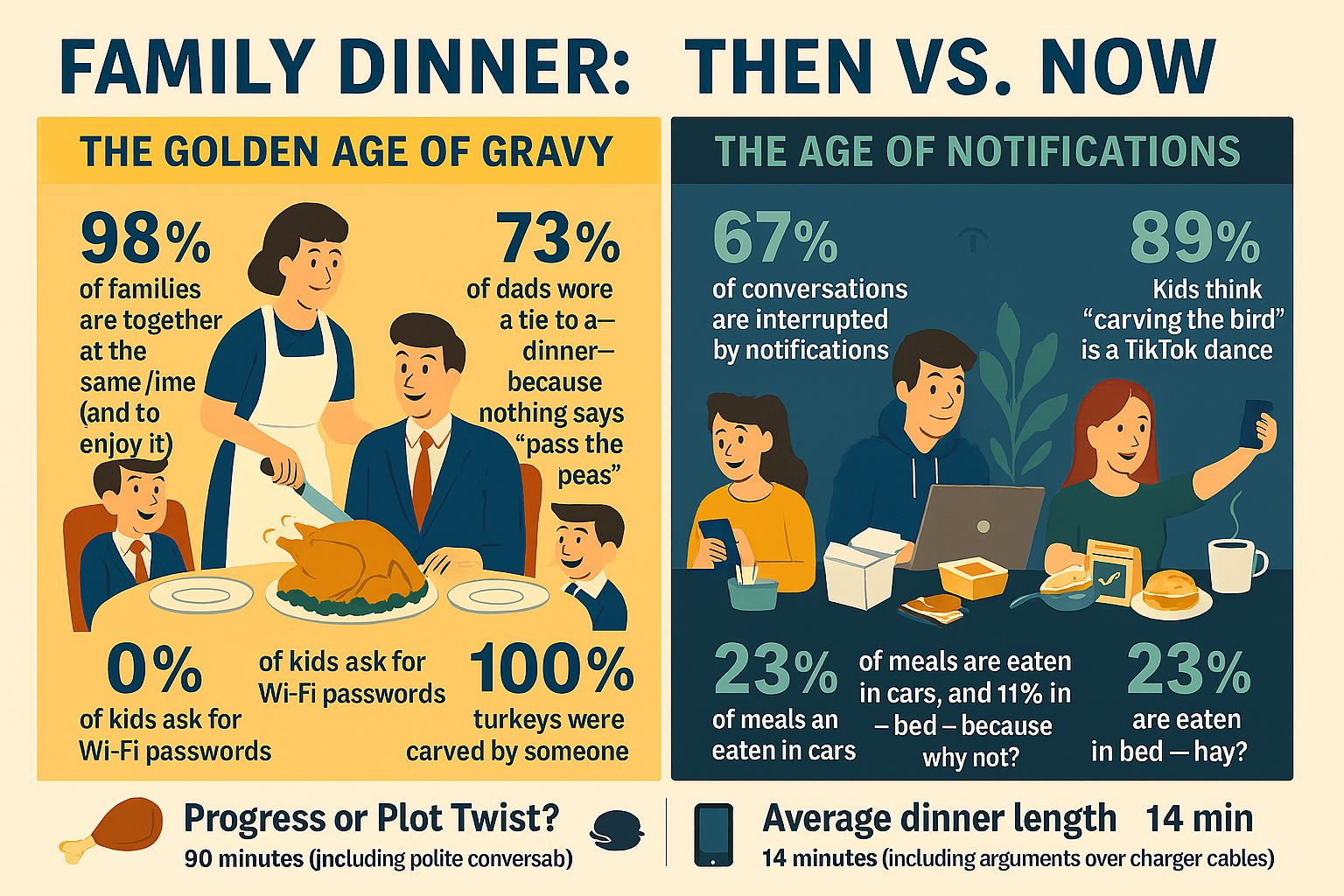Scene One: The Golden Glow of Domestic Bliss
When we tuned into our black-and-white television sets in the 1950s, the image was clear—even if the reception wasn’t. There it was: the idealized family unit, polished like a Buick and twice as shiny.
The family sat around a table that looked like it had been meticulously arranged by Norman Rockwell himself and sponsored by the Poultry Association of America. Mom’s apron was so crisp it could have sliced through the tension in the room, Dad exuded authority and pipe smoke, and the kids were practically floating with joy at the sight of a turkey that had clearly been basted in the essence of a perfect family.
This wasn’t just dinner. It was a national mood board. A promise that if you bought the right detergent and subscribed to the right magazine, you too could achieve this shimmering tableau of harmony.
Scene Two: The Fine Print Nobody Read
But let’s pause for a moment: Were the family values we held in the 1950s a mirage—a shimmering image that fades upon closer inspection? Or were they the product of a society that was rapidly changing, with new technologies, economic shifts, and evolving cultural norms?
Behind the scenes, Mom wasn’t just carving the bird—she was carving out her identity in a world that told her happiness came with a matching set of Pyrex bowls. Dad wasn’t just smiling; he was calculating how many more years until the pension kicked in. And the kids? They were rehearsing their lines for the next Kodak commercial.
The truth is, the 1950s family dinner was less about nourishment and more about performance art. It was a cultural Broadway show where everyone knew their role:
- Mom: Culinary goddess and emotional shock absorber.
- Dad: Breadwinner, chairperson of the gravy boat.
- Kids: Cheerful props with clean fingernails.
Scene Three: Fast-Forward to Today
Now, let’s imagine the family of today. What does this picture look like in the age of smartphones, social media, and on-demand services?
- Mom’s apron has been replaced by a DoorDash bag and a podcast about “mindful eating.”
- Dad is multitasking between a Zoom call and Googling “how to fix Wi-Fi before the kids revolt.”
- Kids are staring at glowing screens, silently judging the turkey for not being plant-based, while texting memes about family dysfunction.
- The family dog? Livestreaming the chaos on TikTok under the handle @DinnerDisaster.
The modern family meal isn’t about carving the bird—it’s about carving out time between notifications, soccer practice, and existential dread. The centerpiece isn’t a turkey; it’s a charging station.
Scene Four: From Turkey to Takeout—A Timeline
- 1950s: Dinner is a sacred ritual. The table is set, the meat is roasted, and the conversation is polite enough to make Emily Post weep with joy.
- 1980s: Microwave meals enter the chat. Family bonding now includes arguing over who gets the last Salisbury steak.
- 2000s: Drive-thru diplomacy. Dinner happens in the car, and ketchup packets double as emotional support.
- Today: “Family dinner” is a calendar invite that gets rescheduled three times and eventually becomes a group text with emojis.
Scene Five: The Moral of the Meal
So, was the 1950s family real? Or just a sepia-toned fantasy where everyone smiled because they didn’t know avocado toast was coming for their cultural dominance?
Maybe the truth is this: every era has its own version of the perfect family dinner—whether it’s turkey and taffeta or tacos and TikTok. The only constant? Someone will always complain about the gravy.
